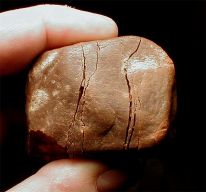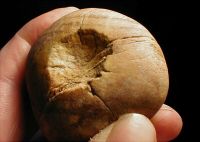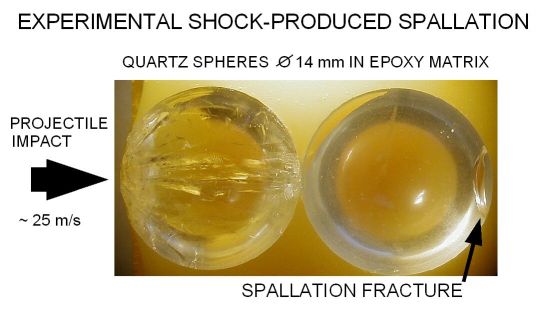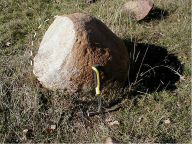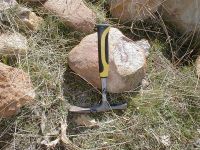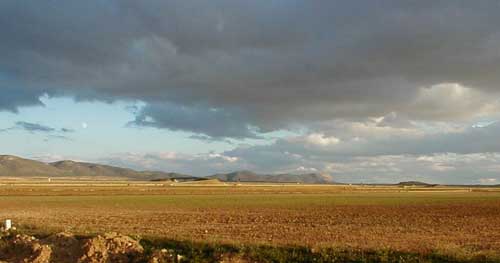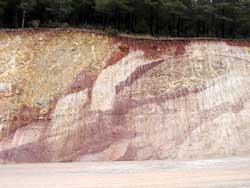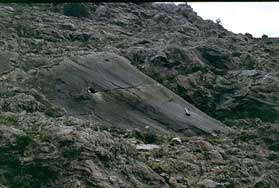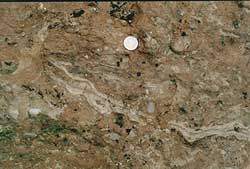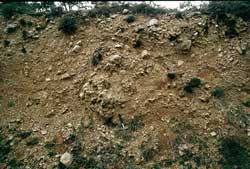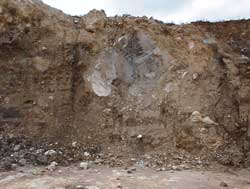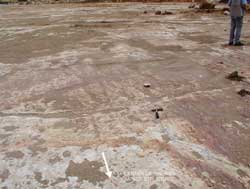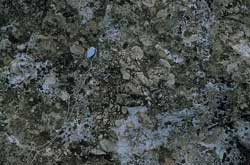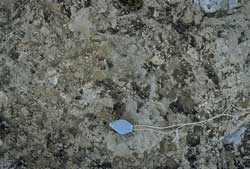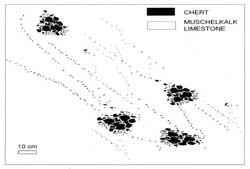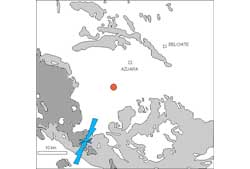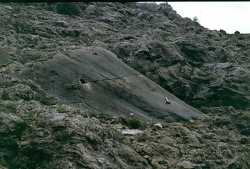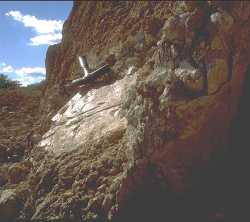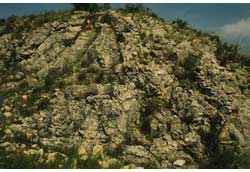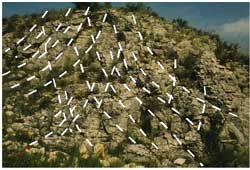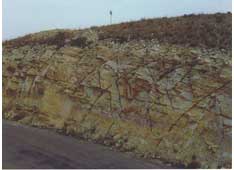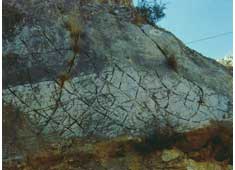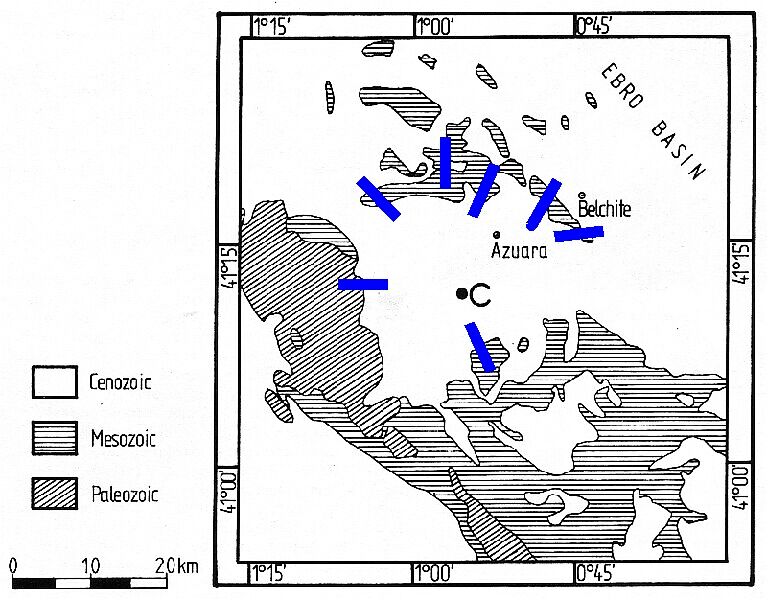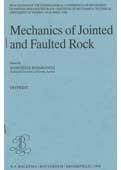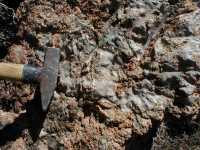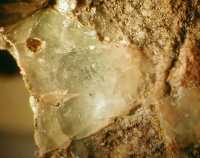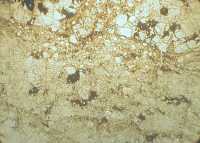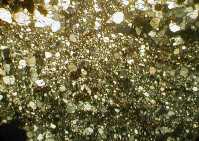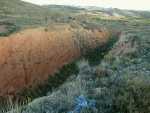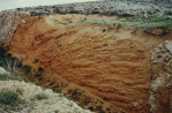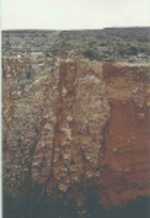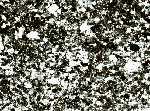| Spallation is a well-known process in fracture mechanics as well as in impact cratering and has been investigated theoretically and experimentally by many researchers. Unfortunately, it is less well known that spallation can also be observed in nature as an actually existing geologic phenomenon in and around impact structures. The present WEEKLY IMAGE shows already known spallation features in conglomerates around the Azuara/Rubielos de la Cérida impact structures (Spain), now recognized to form a 120 km long impact crater chain (see – KLICK here; and Ernstson, K., Schüssler, U., Claudin, F. & Ernstson, T. (2003): An Impact Crater Chain in Northern Spain. – Meteorite, 9/3, 35-39 – KLICK here), and prominent spallation fractures only recently observed in ejecta (Pelarda Fm. ejecta) from this crater chain.Spallation takes place when a compressive shock pulse impinges on a free surface or boundary of material with reduced impedance (= the product of density and sound velocity) where it is reflected as a rarefaction pulse. The reflected tensile stresses lead to detachment of a spall or series of spalls.Prominent spallation effects have been reported for shocked Buntsandstein conglomerates exposed around the Azuara/Rubielos de la Cérida impact structures. Details about these geologic spallation features have been described in Ernstson, K., Rampino, M.R., and Hiltl, M. (2001): Cratered cobbles in Triassic Buntsandstein conglomerates in northeastern Spain: An indicator of shock deformation in the vicinity of large impacts. Geology, 29, 11-14., and can be found here. | |
|
|
|
|
Images D, E. Concave spallation fracture surfaces in quartzite boulders from the Pelarda Fm. ejecta. |
|
| The Images A and B show typical shock-produced spallation features in these Buntsandstein quartzite cobbles: subparallel open spallation fractures (Image A) and a concave fracture surface forming a crater after the detachment of a lens-shaped spall (Image B). This concave spall fracture near a spherically shaped reflection surface is predicted by theory (and hardly explained by any other geologic process) and can be produced experimentally as shown in Image C. | |
| The shock experiments were performed at the Fraunhofer Institute for High-Speed Dynamics (Ernst-Mach-Institut) in Freiburg, Germany. A single-stage powder gun was used to accelerate steel projectiles. As targets, we used two quartz spheres (rock crystal) in contact, embedded in a synthetic epoxy matrix. The shots were performed with impact velocities in the range of 25 to 115 m/s, corresponding to initial impact pressures between 0.55 and 2.5 GPa (5.5 and 25 kbar). The recovered samples were cut in half (see Image C, shot 3), thin sections were made, and the results of our observations were presented in Ernstson, Rampino, and Hiltl (see above). Here, the recovered sample of shot 3 at lowest impact velocity is shown (Image C) displaying a clear spallation fracture in the right-hand sphere otherwise untouched. | |
| In the Ernstson/Rampino/Hiltl paper published by Geology (see above), the importance of such shock-deformed autochthonous conglomerates for an easy recognition of regional impact signature has been pointed out. | |
| Here, we report on recent observations of prominent spallation fractures in quartzite boulders from the Azuara/Rubielos de la Cérida impact ejecta (Pelarda Fm.). The Image D shows a typically deformed boulder that displays a concave spall fracture surface being a mirror image of the convex surface (sketched as white broken line in Image D) of the detached (and now missing) large spall. A similar concave spallation fracture can be seen in Image E. | |
| The quartzite boulders (mostly Cambrian Bámbola quartzite and Ordovician Armorican quartzite) contributed to the upper part (dominating molasse sediments) of the purely sedimentary target and, upon impact, experienced moderate to strong shock before excavation and ejection. The shock is documented by abundant multiple sets of PDFs in quartzite boulders (see, e.g., the sound PDF analysis made by Dr. Ann Therriault, in: Ernstson, K., Claudin, F., Schüssler, U. & Hradil, K. (2002): The mid-Tertiary Azuara and Rubielos de la Cérida paired impact structures (Spain). – Treb. Mus. Geol. Barcelona, 11, 5-65 – KLICK here, and on shockeffects ). We assume that the prominent spall fractures in the large quartzite boulders have originated also from the initial shock event, although a formation by collision of quartzite boulders during excavation and ejection must also be taken into consideration.
************************************************************************************** Impact spallation in nature: Interesting shock spallation features have been reported also from the Chiemgau impact meteorite crater strewn field in Germany and from the suspected companion Saarland impact in Germany. Articles may be clicked HERE and HERE. |
|
Author: admin
An Impact Crater Chain in Northern Spain:
This is the title of an article only recently published in
METEORITE, The International Quarterly of Meteorites and Meteorite Science
For the readers of METEORITE (and others), the black-and-whites of the article are shown here as original color prints.
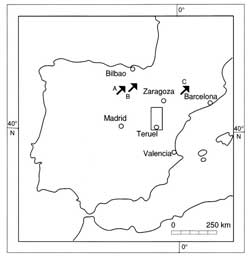
Fig. 1. Location map for the Azuara – Rubielos
de la Cérida impact crater chain (frame in
Fig. 2) and suspected impact locations (A, B, C).
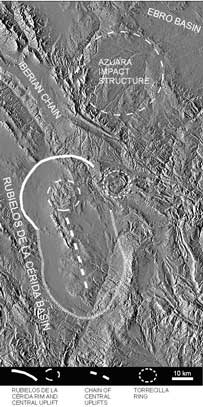
Fig. 2. The topography of the Azuara/Rubielos
de la Cérida crater chain (from the digital map
of Spain, 1 : 250,000; provided by Manuel Cabedo).
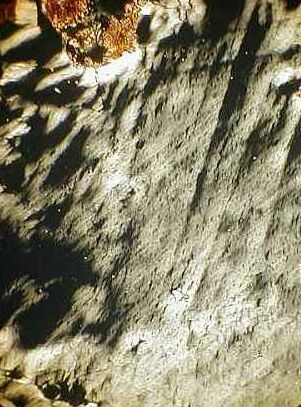
Fig. 3. Photomicrograph of strongly shocked
quartz from the Rubielos de la Cérida basin.
Ries impact structure: Bunte Breccia ejecta resting on scoured, Upper Jurassic limestone
Azuara impact structure (Spain): Evidence of shock fluidization of competent limestones
Rubielos de la Cérida impact structure (Spain): Impact-induced internal rock polish.
AZUARA IMPACT STRUCTURE (SPAIN) CURVED JOINT SETS: INDICATION OF IMPACT-INDUCED FRACTURING
Azuara impact structure (Spain), Ries impact structure (Germany): impact as a geologic process
| A few kilometers outside the northern ring of the Azuara impact structure near Belchite, a handful of isolated large blocks of Jurassic limestones emerge from the post-impact Upper Tertiary Ebro basin sediments. Quarrying in these blocks has enabled instructive insight into the drastic impact deformations experienced by very large rock volumes. | |
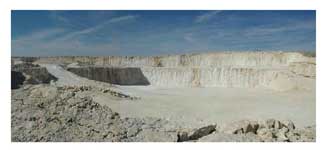 A A |
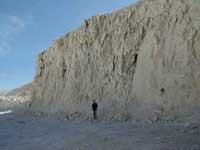 B B |
| Image A shows part of a large quarry located at UTM coordinates 0687000, 4583000. The visible length in the image is roughly 300 m. The limestones are drastically destroyed through and through to form a more or less continuous breccia displaying grit (gries) brecciation and mortar texture (see Images B – E). | 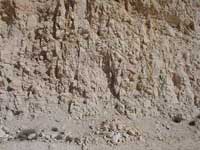 C C |
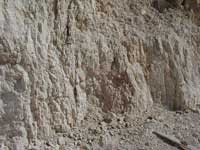 D D |
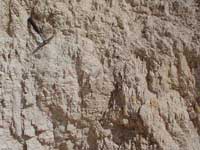 E E |
| Comparable strong and continuous deformations (Images F, G) can be observed in a limestone quarry located in another block at UTM coordinates 0683000, 4583000. | |
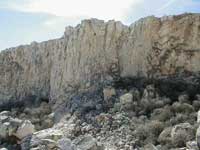 F F |
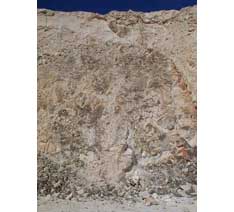 G G |
| H and I Ries impact structure; Iggenhausen quarry | |
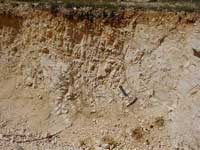 H H |
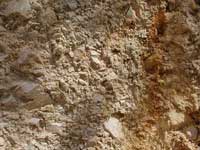 I I |
| Comment: The Azuara region and the Jurassic limestones underwent Alpidic tectonics with some folding and block faulting, but we emphasize that Alpidic tectonics can not possibly have caused these disastrous deformations over hundreds of meters. Impact cratering is the only reasonable process to have produced this impressive geologic scenario, and the same deformations are well known to occur in large allochthonous limestone megablocks ejected from the 25km-diameter Ries impact structure (Germany) (Images H, J; Iggenhausen quarry).We suggest that those geologists from the Zaragoza university and the Center of Astrobiology (Madrid) vehemently refusing an Azuara impact visit these highlighting outcrops. Since they like to contrast the Azuara structure with the Ries crater (see their MAPS paper referred to in the Controversy section), they will get a lot of illustrative material.There is one more point we want to refer to. As already said, impact is the only reasonable geologic process that explains these desastrous and voluminous deformations. In other words, there’s actually no need for the well documented strong shock effects in Azuara polymictic breccias to establish Azuara as an impact structure (see below in the Archives and https://www.impact-structures.com/impact-spain/the-azuara-impact-structure/shock-effects-shock-metamorphism-in-rocks-from-the-azuara-impact-structure/ ). The outcrops under discussion here are as well a convincing proof.Usually, the impact nature of a structure under discussion is established by the occurrence of shock metamorphism. Reasonably, it is argued that there are no endogenetic processes known to produce, e.g., diaplectic glass or planar deformation features (PDFs) in quartz. Likewise, we argue that there are no endogenetic geologic processes known to have catastrophically destroyed the Jurassic limestones near Belchite.Therefore, geologists should be aware of their competence to establish in some cases an impact structure from pure field evidence. The time has come to give up the very limited point of view of some impact researchers that TEM analyses of PDFs or geochemical signature of the projectile are the ultimate requirement for establishing an impact structure. |
|
Rubielos de la Cérida impact structure (Spain): impact melt glass from the central uplift
Rubielos de la Cérida impact structure, Spain: at the crater floor
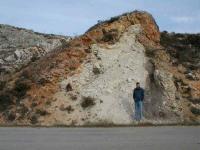
This peculiar fold is exposed in a region of an extended megabreccia near the village of Barrachina in the Rubielos de la Cérida impact structure. The fold is portrayed by a competent, however heavily brecciated Lower Tertiary limestone layer. The core of the fold is a pulp of nearly pulverized carbonate rock without any regular internal structure. Only a few limestone fragments are preserved.
Interpretation: The exposure is assumed to be located at or near the crater floor of the Rubielos de la Cérida impact structure (for more details see:
where giant rock masses moved in the excavation and modification stage of impact cratering to form the now exposed megabreccia. The fold is interpreted to be the result of a high-pressure injection of extremely brecciated material from below. A tectonic origin of this peculiar structure is hardly to understand. Local geologists (from the Zaragoza university and the Center of Astrobiology, Madrid) suggest collapse by dissolution of gypsum to have produced the megabrecciation – need we comment?







































































